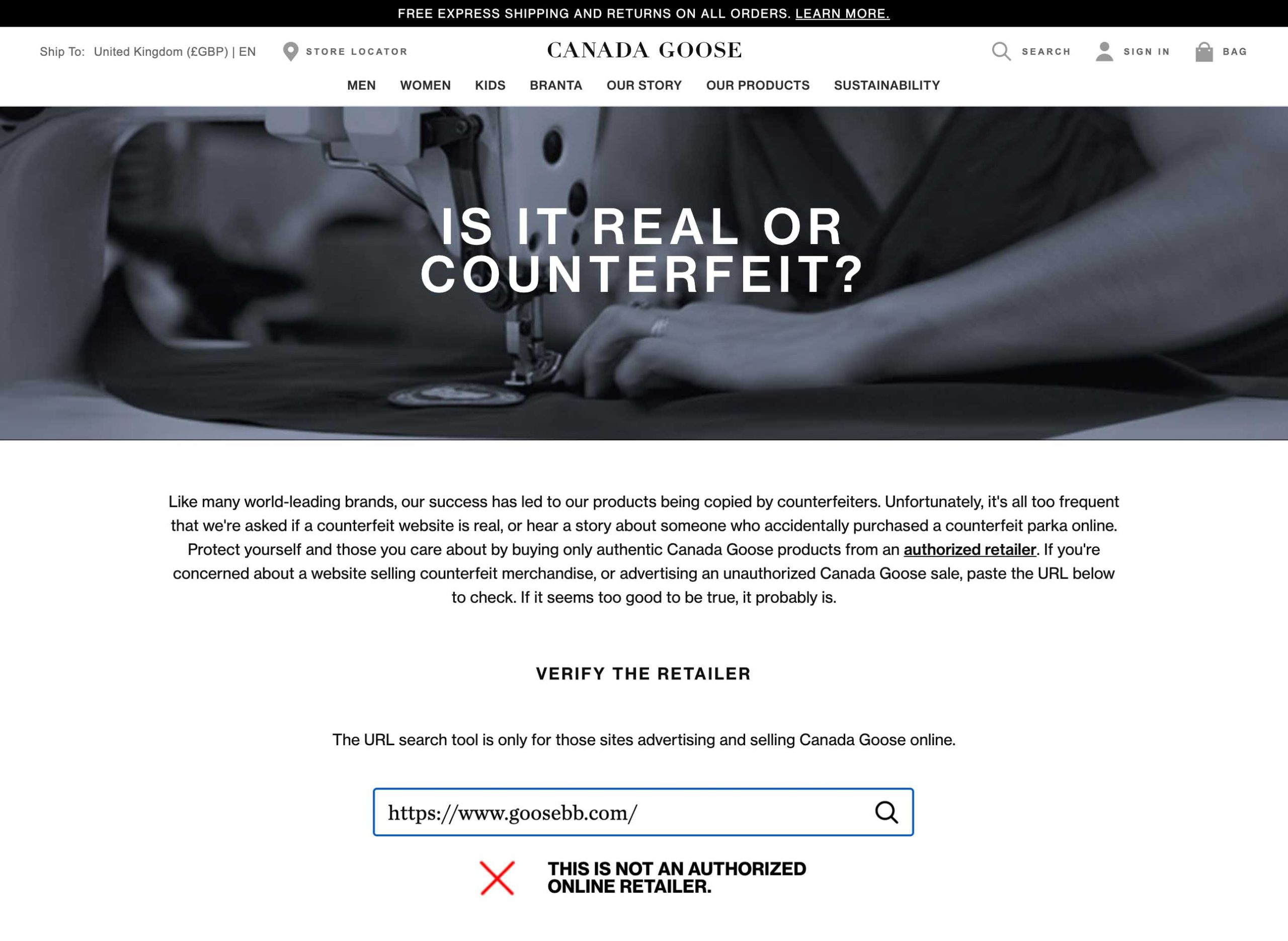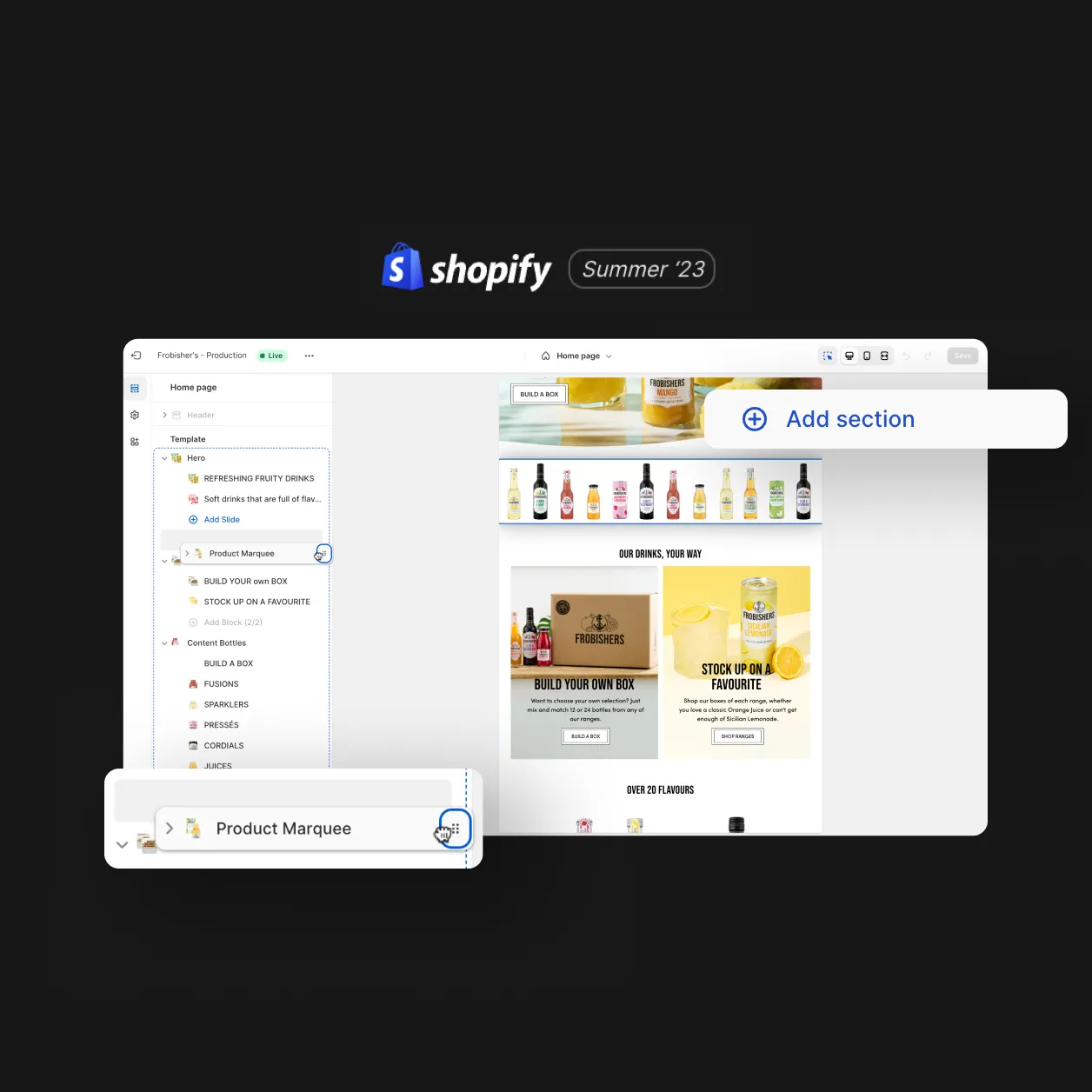
Businesses like to see what other businesses are doing, particularly their competitors. Whether it’s a D2C business model, ad placement or a punchy line of copy; few ideas are totally original and that’s ok. Competition is healthy and you’re allowed to take inspiration from other people’s work. But it needs to be inspiration, not imitation.
[Cutting corners is not an option and can have ridiculous results. Back in our London Ad-Agency days we once saw a brands’ PPC advert being copied and pasted by another brand – or their agency – without even bothering to change the call extension phone number. The result? Our client received the conversion (yes – this really did happen and no, we won’t tell:)
When I think of examples of imitation, I immediately think of fast fashion and the countless examples of copycat work. Many brands in this sector have particularly laissez-faire attitudes to imitation but social media has proven a great democratiser for the little guy to stand up to large corporations.
The bigger the brand, the bigger the backlash and for the brand, in question the ultimate fear lies in not being perceived as credible amongst your target audience. Urban Outfitters has been guilty of copying products from smaller merchants for years. This creates unwanted PR for a brand, particularly as a company like Urban Outfitters seek to market products towards ‘young creatives’ to fit the guise of counterculture brand, whilst ironically being a large multinational.
More recently another fast-fashion brand, Zara, has been accused of plagiarising indigenous Mexican artists which compound the points above with claims of cultural appropriation. This represents a bigger problem than simply plagiarism and it is called counterfeiting.
This following excerpt the Economist describes that; in the markets of San Cristóbal, 47km (29 miles) away from Aguacatenango, real dresses from the village share shelf space with identical fakes made in Asia. “Piracy is worse [than plagiarism by brands] because it kills the industry,” says Ms Harp. Some of the seamstresses wear knock-offs of their own traditional dresses while they fashion the real thing for sale to others.
Ethical fashion brands such as Patagonia and Boden are looking to reverse the trends outlined above but there are two big issues they will come up against.
Many people are price-driven
It’s all very well for a £50 Patagonia shirt to be ethically made, they have the margins to do so and their customers have the means to pay extra. Many people simply cannot afford to pay this premium and others won’t care.
A lack of collective trademarks
Small vendors, artists and indigenous communities have fragmented and limited legal resources, as a result of taking legal action against big brands is extremely difficult. Even if legal action is taken the fundamentals of post-industrial IP offer little scope for protection – particularly for indigenous designs that cannot be passed down through generations in a legal sense. A new form of IP protection will be required for this specific sector. This looks unlikely and many brands are still figuring out the ethics involved in their own supply chains.
Plagiarism and counterfeiting are widespread and hugely frustrating but where do you draw the line and how can you prevent it? In this blog post, we’ll share tips and best practice advice to prevent your work from being stolen or resorting to stealing someone else’s.
Brand Ideas:
Authenticity is far more powerful than anything else. If you spend time creating a strong brand, with a clear tone of voice then that will come across; it will be genuine, core to your business identity and used consistently – making it very difficult to be replicated successfully by somebody else.
An example of this is how we’ve created a brand around the word ‘tribe’. We’re not the first to come up with this word, nor the first to apply it to marketing. The theory of a ‘Tribe’ describing a group of people with a shared interest being brought together and guided by a chief or leader was coined in Seth Godin’s book ‘Tribes’ back in 2008.
While the book inspired the name of our business and the terminology also clearly linked to our services, we went a step further with our branding to cement the concept and differentiate from competitors. Internally we use our own set of processes, all points that make us differentiated for other companies offering a similar service. Collectively, these little touches result in brand identity. If we were to imitate or copy another agency and the prospective client might view this as us having limited imagination and creativity – not something you want to be associated within our industry.
If you are the brand being copied just remember what is relevant for your business. Sometimes you can’t win, or afford, legal wrangling so you simply have to leverage PR effectively and use wit to fight back.
An example of a repeat copy-cat offender is Aldi. Often taking it to the limits with imitation, Aldi shamelessly goes as far as it can. Jo Malone slammed the company for ‘creative laziness’, while Brewdog hit back and cemented its brand of unapologetic values.

Content:
Like branding, genuine content is far more engaging than an awkwardly phrased replica. It’s very easy to look at a rival businesses blog and think ‘that’s great – let’s copy what they do’.
However, it will be far more beneficial long term for you to take the time to plan original content yourself and discover content ideas that are unique to your business. For example, your company history, its location, visitor stories, old photos – all of these things are difficult to replicate, it’s why so many brands curate their heritage so meticulously.
Inevitably you will quote other people and that’s fine provided you reference and accredited. If you’re publishing somebody else’s work (for example an entire blog post) you can use a canonical tag pointing towards the original URL source – this lets search engines know you are referencing a source, not intentionally copying.
If you’ve just finished writing that latest company blog post and you’re unsure whether everything you’ve written is unique, try using a plagiarism checker to ensure you’re not unknowingly imitating.
Images:
Plagiarism within the arts (photography, illustrations and graphics included) is amongst the most contentious as the creative output is how artists earn a living. Taking their work for free means they don’t get paid or any recognition. Therefore, more and more people are going to extra lengths to protect their work with watermarks placed on the image so that the source is visible. This does create problems if you are looking to sell products on Google Shopping as they forbid watermarking, meaning this is not an option for many e-commerce retailers.
A few years back we paid for a professional photoshoot for our own e-commerce website, only to find 6 months later this image (along with three others) being used by another London based rival selling the same product. Their excuse ‘I found them on social media and didn’t know they were yours’ didn’t sound overly convincing. They did remove them from their site.

While this is effective in protecting images and suits creatives such as photographers, it offers little protection against creating a similar composition.
Certain social channels, such as Instagram, have the ability to easily reference the person who took the original image through tagging either in the text on directly onto the images themselves.
URLs:
If you’re new in digital, the number of URLs available can seem limited as people have already snapped up many of the best titles – be this for domain squatting or genuine use.
One step beyond this is the practice of buying a domain and attempting to pass it off as a recognised brand – an obvious example is luxury products where the brand is key to a premium price tag and is out of reach of most web users.
Here is an example of a fake Canada Goose website GooseBB.com, complete with a lookalike logo and seemingly Amazon-Esque e-commerce functionality, other than the lower prices you would be surprised how many people would think this genuine.

This blog post is a good read, which details a consumer who purchased from a similar site.
Search engines claiming to limit the visibility and even blacklist these types of sites – however, I found the site above in under 30 seconds via Google. Migrating websites to new domains and hosting to new jurisdictions is very easy – for the owner of this website its probably one of their key marketing strategies.
The globalised nature of the internet means a counterfeit site could potentially be fragmented around the globe (hosted in Taiwan, developed in Bangladesh but shipped from China) to consumers in the U.K. This type of business setup wasn’t going to be considered in international law and getting sites like this closed down is easier said than done.
If you experience somebody copying you going down the legal route is an option, but hard for smaller businesses as the process takes time and can be prohibitively expensive. Sometimes you just have to accept that there is a URL similar to yours in search results. However, you can help your search visibility by putting greater emphasis on your SEO activity to ensure you have a strong organic Web presence that effectively communicates you as the authority.
Canada Goose has tackled this problem effectively by providing a page that warms about this activity via a page featuring a reseller URL validator.

From a consumer perspective if you ‘Google’ a brand name and you find a website that has a URL containing the brand + other words (often: cheap, discounted, online) the URL is an imitation – unless that’s what you’re looking for?
Social:
Social channels are another online property that many people like to replicate or register in the hope that someone might buy it from them – and this doesn’t just occur for high street brands. If your business is being replicated, you can report them on Facebook and follow the procedures to close that page, something that we recently recommended to a client.
Design
Inspiring behaviour change through visual experiences. Our digital design services ensure instant clarity and visuals that cut-through in a cluttered market.




